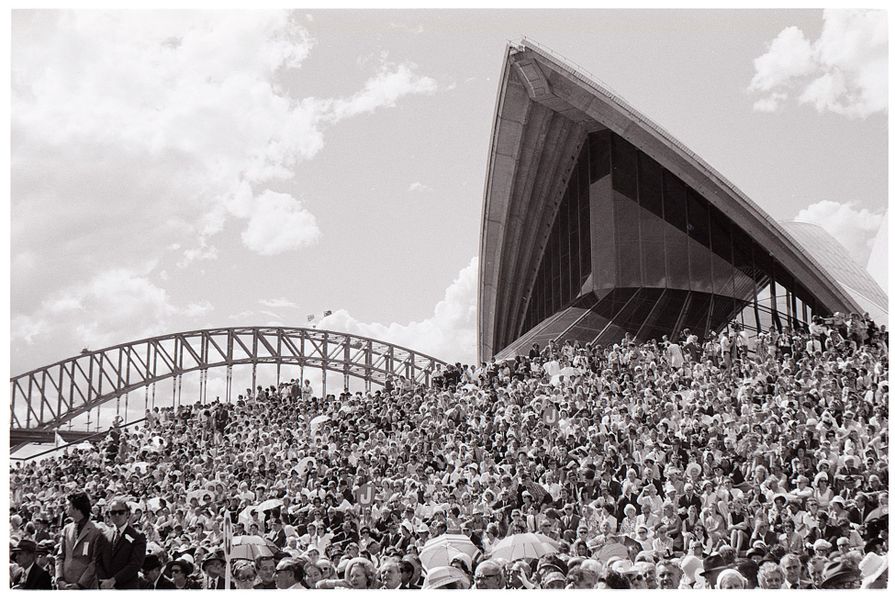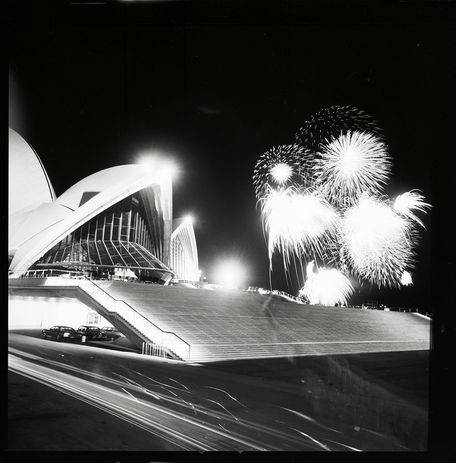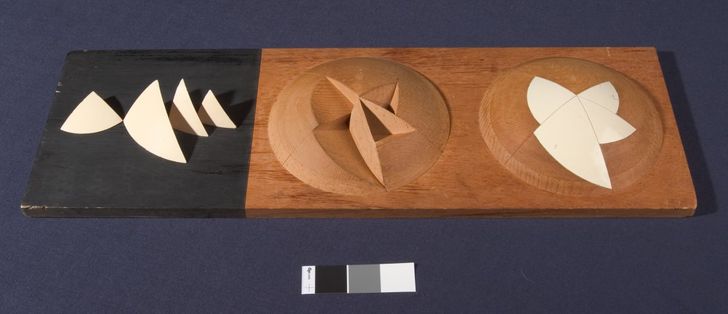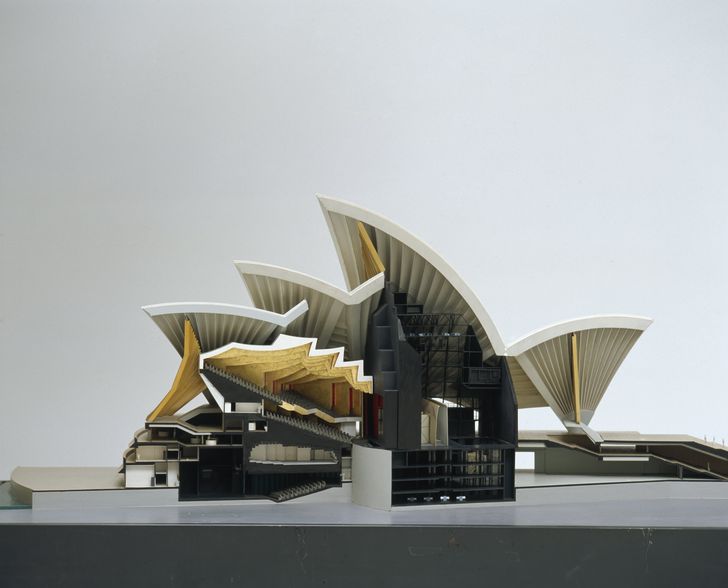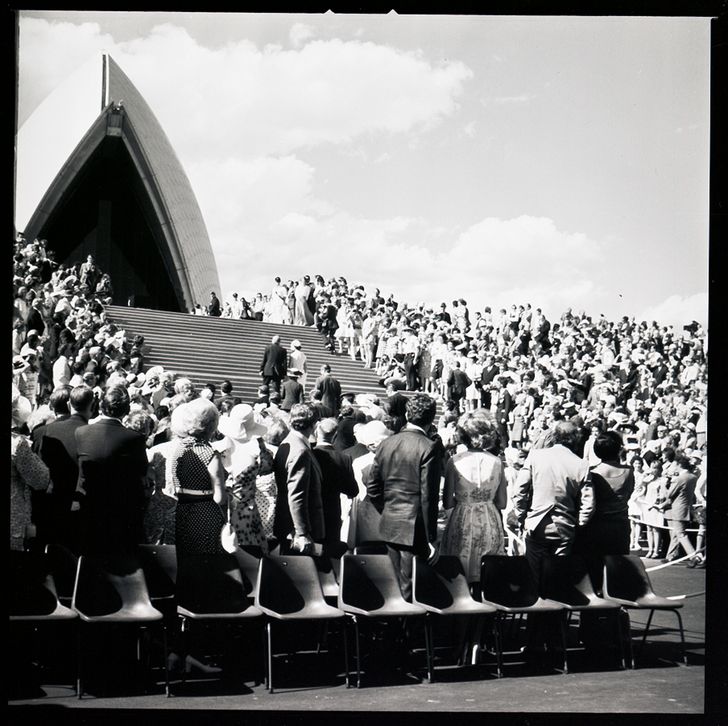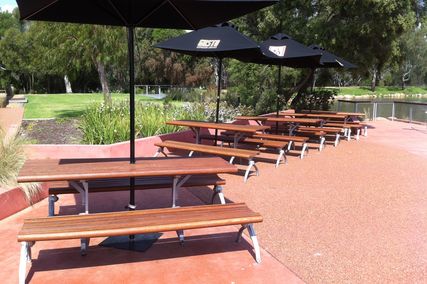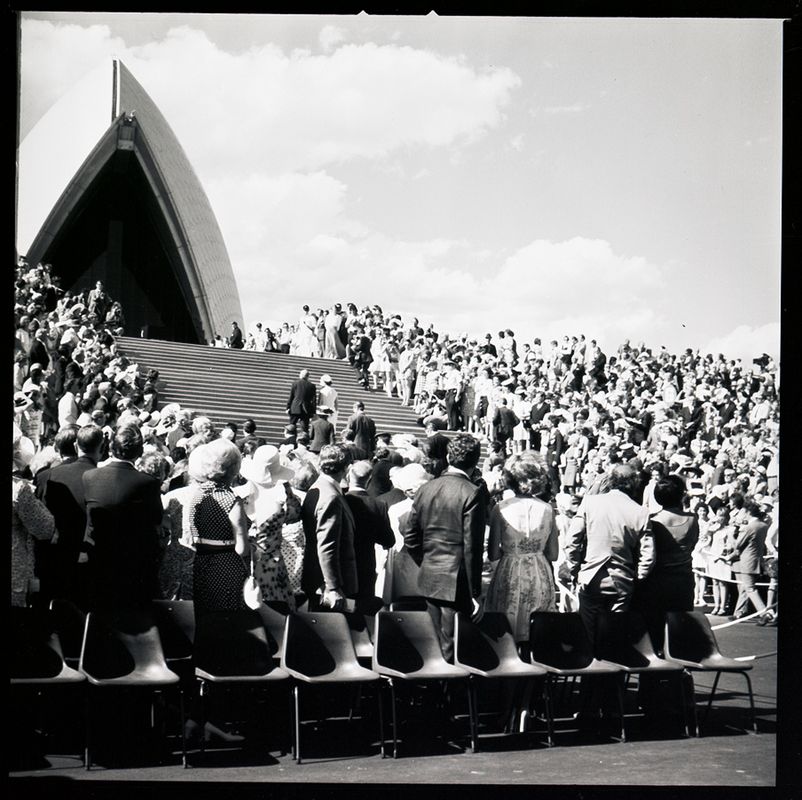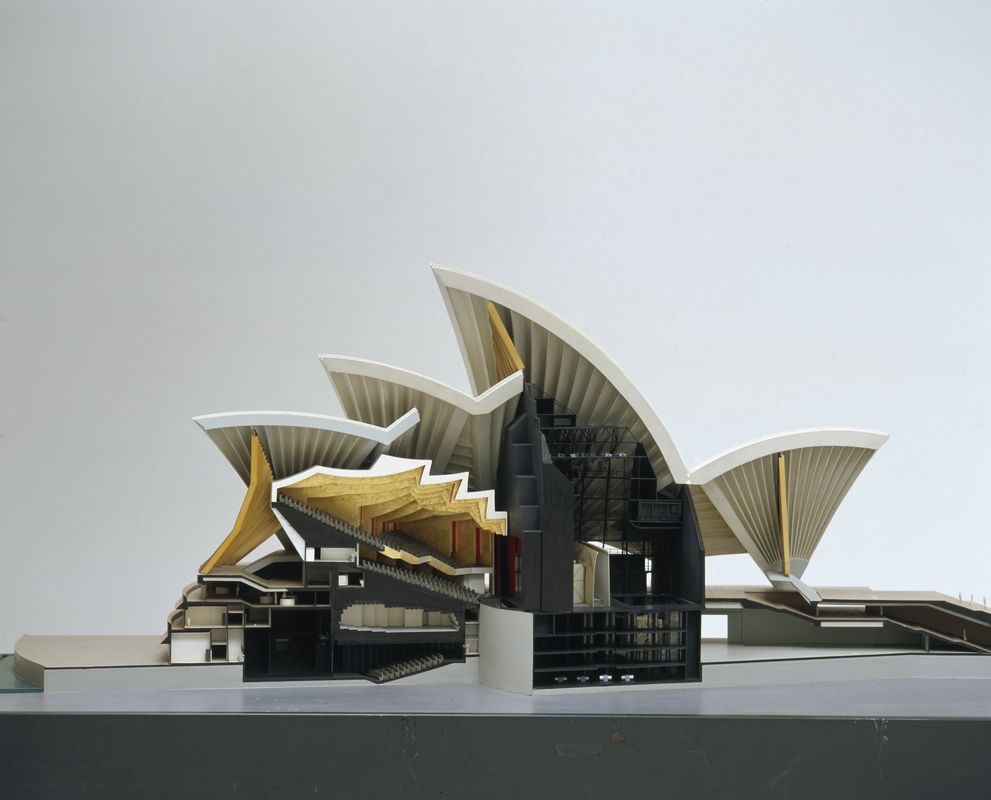The origin story
1. A grand opera house and concert hall was the dream of Eugene Goossens, an English conductor and composer who first came to Australia to take the Sydney Symphony Orchestra on a national tour. He was unimpressed with the Town Hall as a concert venue and began postulating for Sydney to have its own concert hall.
2. Karl Langer first seeded the idea for an opera house at Bennelong Point. While working on a Council of Sydney plan to redevelop the Circular Quay area, he met with Eugene Goossens and suggested that the conductor’s dream could be realized on the site of dilapidated tram sheds. Goossens became fixated with the idea, despite plans in place to build a new bus depot on the site and the Overseas Passenger Terminal was planned for the eastern side of Circular Quay.
3. In 1954, the NSW government formed a Sydney Opera House Committee of which Goossens was a member.
4. The committee decided that Bennelong Point was the best site for the Opera House, and upon taking the advice of the committee, then premier Joe Cahill swiftly moved the bus depot to Pyrmont and the Overseas Passenger Terminal to the western side of Circular Quay.
5. An international competition for a National Opera House at Bennelong Point was announced on 15 February 1956.
6. Goosens was caught in a salacious scandal with the “Witch of Kings Cross” Rosaleen Norton, and was forced to leave Sydney in disgrace. He was the only person on the Opera House committee who had knowledge and experience of the complex needs of the opera, ballet and symphony.
The vision
7. The competition received registrations from 933 competitors with 223 entries.
8. Jørn Utzon’s submission, number 218, was initially rejected without a second glance by three of the four judges: Harry Ashworth, professor of architecture at the University of Sydney; Cobden Parks, NSW government architect; Leslie Martin, head of architecture at Cambridge University and architect of Royal Festival Hall in London.
9. Utzon’s submission did not include a perspective of the design from the harbour, a requirement in the competition. Eero Saarinen, who picked Utzon’s submission out of the reject pile sketched two perspectives to convince the other judges.
10. Utzon’s winning design of the Opera House has variously been compared to a crocodile (by premier Joe Cahill), a Danish pastry, a 25th century bluebeard’s lair, an armadillo in concrete, a prehistoric monster, a disintegrating circus tent in a gale, an armadillo with rheumatism, and an angry swan leaning forward with raised wings (by Ove Arup).
11. Frank Lloyd Wright was scathing of the winning design, calling it “a canvas-topped barge trying to make sail out at sea in the wrong direction.”
Fireworks at the official opening of Sydney Opera House
Image: Government Printing Office/MHNSW
The lotteries
12. Construction of the Opera House was funded through special state lotteries, originally established to raise money to build hospitals. The state lotteries also funded the construction of the Sydney Harbour Bridge, and Sydney’s bid for the 2000 Olympic Games.
13. At the after party of one of the first fundraising events, Utzon donated £50 pounds to kiss the cheek of a Sydney Symphony orchestra flautist and another £50 pounds to kiss the wife of the violinist (apparently a 50 percent discount from the normal fee). In all £295/15 shillings was raised from the kissing fundraiser.
14. The first lottery was drawn in January 1958 with a prize of £100,000. In all 496 lotteries were drawn between 1958 and 1986 with 86 million tickets sold.
15. The 10th draw of the lottery was won by Bazil and Freda Thorne in June 1960. A few weeks later, their eight-year-old child Graeme was kidnapped with a ransom demand of £25,000. Graeme’s body was found six weeks later and Stephen Bradley was convicted of his murder in 1961. The case reverberated across the country and has been described as the event that ended Australia’s innocence and introduced the concept of “stranger danger” to the country.
16. Engineers Jack Zunz, John Nutt, and construction manager Corbet Gore entered the lottery in 1984 under the name Job No. 1112 (Arup’s internal reference for the Sydney Opera House project). They won first prize.
The construction
17. The foundation stone, made of pure bronze, was laid on 2 March 1959.
18. Premier Joe Cahill died on 22 October 1959, and with that, the second great proponent of the Sydney Opera House was lost.
19. The Utzons dined with Queen Elizabeth II and the Duke of Edinburgh on their arrival in Sydney on 4 March 1963 aboard the Royal Yacht Britannia, which was anchored at the Overseas Passenger Terminal across from Bennelong Point.
20. The geometry of the Opera House sails troubled both architect and engineer for years. Engineers Arup and Partners originally proposed parabolic ellipsoids to achieve the curves in Utzon’s competition-winning design. But they were not able to come to a resolution on how it would be built, until Utzon’s “eureka moment” in 1961, when he realised that the shells could all be cut from the same spherical ball. This has been popularly retold over the years as Utzon peeling an orange, but this is a myth. Utzon’s “eureka moment” came when he was packing up a Perspex model of the building and noticed that each shell stacked neatly into another. He realised that the shells need not to be unique in shape and size and instead, can be derived from a single form – a sphere. An orange was later used to explain the solution.
Jørn Utzon’s model of the geometry of the Sydney Opera House.
Image: National Library of Australia
21. In 1963, it was discovered that the concrete foundations would not support the load of the roof and needed to be strengthened. So in an effort to expedite the demolition and reconstruction of the foundation, explosives were used to blast the foundations apart. This was done primarily during the morning rush hour to drown out the noise of the blasts, until a piece of flying concrete landed on a passenger ferry in the harbour.
22. The most powerful computer in Australia at the time, at Woomera Rocket Range, was used to calculate the double curvature of the shells’ concrete ribs.
23. The tiles for the Opera House sails were made by Swedish company Höganäs who worked with Utzon for three years to produce the subtle glistening effect Utzon wanted. The tiles are predominantly clay, with a small percentage of crushed stone. They are steam cured and self cleaning. There are 1,056,006 tiles in total.
24. The original Major Hall was to be multi-purpose, capable of staging symphony, opera, and ballet. In 1963, the head of the ABC requested the architect to change the seating arrangement, five years after it was first proposed. Utzon was forced to relocate 900 seats from behind the orchestra. When Peter Hall started work on Major Hall, he found that there were major deficiencies with the design. After a year of trying to find a solution, the decision was made to change the multi-purpose hall into a symphony concert hall only. The stage machinery, designed by Utzon, was subsequently demolished.
25. While working on the Sydney Opera House, Utzon won first prize in a competition to design a theatre in Zurich, which was never built.
Model of Sydney Opera House.
Image: Marinco Kojdanovski/Powerhouse Collection
The controversy
26. The election of the Askin Liberal government in 1965 proved disastrous for Utzon, who struggled to see eye-to-eye with the new Minister for Public Works Davis Hughes. Hughes was determined to rein in spending on the project, despite the Sydney Opera House lottery fund still in surplus. While in opposition he repeatedly attacked the government for their perceived loss of control on the project.
27. Utzon and Davis were deadlocked on the delivery of drawings for Stage III. Utzon needed funding approval to prototype the plywood ceilings and window mullions with Ralph Symonds, which, Utzon insisted, was the only manufacturer in the world capable of the job. Symonds was in receivership and Hughes wanted all elements of the work to go to public tender and would not entertain the political optics of awarding a contract to a company in receivership. He therefore insisted that Utzon produce the drawings, but Utzon could not proceed with the drawings without first prototyping with Symonds.
28. Hughes refused to pay the architects fees in an attempt to coerce him into submission. Utzon was therefore forced to resign on 28 February 1966.
29. Hundreds of architects and architecture students attended a protest led by the likes of Harry Seidler calling for Utzon to be reinstated, including Peter Hall. 1,000 people attended a protest meeting at the Town Hall.
30. Peter Hall was offered a job with Jørn Utzon on a visit to the Danish architect’s studio during his honeymoon. Hall declined and returned home to take up a position in the government architect’s office.
31. The NSW Chapter of the Royal Australian Institute of Architects tried to broker a resolution between Utzon and the minister to no avail.
32. Ron Gilling, president of the NSW chapter, was under fire from members for not supporting Utzon. At a tumultuous meeting of 750 architects, Gilling and the chapter council narrowly survived a no confidence vote 369 to 283. Another 100 architects abstained.
33. The RAIA later issued an apology to Utzon for not assisting him in 1966.
34. Col Madigan and Ken Woolley were both offered the job of designing the opera house after Utzon’s departure, both declined.
The official party of the Sydney Opera House opening ceremony
Image: NSW State Archives/MHNSW
The money
35. The original estimate for Utzon’s design was £3.5 million. Final cost was $102 million dollars. For all of Hughes’s protests over cost blowouts, 80 percent of the cost were incurred during Stage III, which he oversaw.
36. Utzon was engaged as sole architect following the competition. His fees were to be 5 percent of the total cost. This was a constant source of political consternation, because the more the project cost, the more Utzon was paid.
37. Utzon had to pay tax in Australia and Denmark. Architectural historian Philip Drew later calculated that the total sum of his taxes would have amounted to more than 130 percent, meaning that he would have been taxed more than he actually earned.
38. Neville Wran, who later became premier of NSW, was one of Utzon’s lawyers in his negotiations with the government.
39. After Utzon’s departure from the project, his legal team negotiated a fee for remaining drawings for Stage III. In the handover, Utzon’s team submitted 117 of 5,000 unfinished drawings for a sum of $150,000.
40. The 5,000 drawings were submitted to the State Library of NSW. In 1994, architecture student Philip Nobis from University of Technology Sydney used the drawings to create a digital approximation of Utzon’s designs for the Opera House interior, which was displayed in the Unseen Utzon exhibition.
42. Utzon paid his staff six months of salary after his departure from the project, but this left himself and his family in a difficult financial situation.
42. The family left Australia on 28 April 1966 under false names.
The aftermath
43. Hughes tasked government architect Ted Farmer to put together a team of architects to complete the Opera House. He asked David Littlemore, Lionel Todd and Peter Hall.
44. Hall, after initially declining, accepted the job of completing the Opera House on 19 April 1966.
45. Staff in the government architects office secretly plastered 3,000 “Bring Utzon Back” posters all over Sydney. An anonymous architect told a journalist that those who openly supported Utzon were being blocked from promotion.
46. At the first concert for workers, the acoustic soundcheck, Davis Hughes thanked the three Australian architects but made no mention of Utzon. At the opening of Sydney Opera House there was no mention of Eugene Goossens.
47. Utzon was awarded the 1973 Gold Medal by the RAIA.
48. At the opening ceremony of the Opera House on 20 October 1973, 300,000 people lined the harbour foreshore. 300 million people watched the event televised around the world.
49. The Utzons moved to Majorca on advice from their accountant to become expats.
50. The circular room at Can Lis is inspired by a sandstone cave near Palm Beach where the Utzons lived in Sydney.

